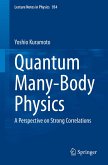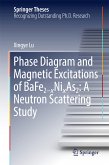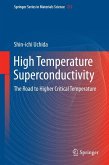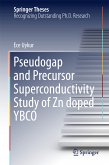The author also studies the superconducting state of URu2Si2 below Tc = 1.4 K, which coexists with the hidden-order phase. A peculiar vortex penetration in the superconducting state is found, which may be related to the rotational symmetry breaking in the hidden-order phase. The author also identifies a vortex lattice melting transition. This transport study provides essential clues to the underlying issue of quasiparticle dynamics as to whether a quasiparticle Bloch state is realized in the periodic vortex lattice.
Dieser Download kann aus rechtlichen Gründen nur mit Rechnungsadresse in A, B, BG, CY, CZ, D, DK, EW, E, FIN, F, GR, HR, H, IRL, I, LT, L, LR, M, NL, PL, P, R, S, SLO, SK ausgeliefert werden.









